Sep
29
2023
 I know we are supposed to be worried about the world supply of fresh water. I have been hearing that at least for the last 40 years, and the statistics are alarming. According to the Global Commission on the Economics of Water:
I know we are supposed to be worried about the world supply of fresh water. I have been hearing that at least for the last 40 years, and the statistics are alarming. According to the Global Commission on the Economics of Water:
“We are seeing the consequences not of freak events, nor of population growth and economic development, but of having mismanaged water globally for decades. As the science and evidence show, we now face a systemic crisis that is both local and global.”
Sounds about right. We are not very good at this sort of large-scale management. Everyone just does their thing, oblivious to the big picture, until we have a crisis. Then experts point out the looming crisis which everyone at first ignores. Then we have meetings, summits, and a lot of hand-wringing but next to nothing gets done. Eventually we mostly technology our way out of the problem, but not after significant negative consequences, especially for the world’s poor. The water crisis seems to be following the same playbook.
Now experts are predicting that by 2030 world demand for fresh water will outstrip supply by 40%. This shortage will affect everyone, including people in wealthy developed nations. So now it’s a real crisis. To be clear, I am not trying to minimize this problem at all. The Commission outlines a seven-point plan for properly and fairly managing the world’s fresh water supply, and it all sound very reasonable. It feels like we are in a phase of human history when we are collectively realizing that billions of people have a global effect on the entire planet, and we need to seriously start transitioning from a local focus on securing resources, to globally managing those limited resources.
Continue Reading »
Aug
29
2023
 We are still sorting out the strengths and weaknesses of the new crop of artificial intelligence (AI) applications, the poster-child of which is ChatGPT. This is a so-called large language model application using a “generative pre-trained transformer”. Essentially these types of AI are trained on very large sets of data and are able to generate human-sounding text by predicting the most likely next word segment in a sequence. The results are surprisingly good.
We are still sorting out the strengths and weaknesses of the new crop of artificial intelligence (AI) applications, the poster-child of which is ChatGPT. This is a so-called large language model application using a “generative pre-trained transformer”. Essentially these types of AI are trained on very large sets of data and are able to generate human-sounding text by predicting the most likely next word segment in a sequence. The results are surprisingly good.
There have been a slew of studies seeing how well ChatGPT or a similar AI performs on standardized tests. On any knowledge-based exam, it does very well. ChatGPT has passed the medical board exams, for example, and even many (but not all) subspecialty boards. If the information is out there on the internet, ChatGPT can generate this knowledge.
All of this has teachers in a well-deserved panic. Students can essentially use ChatGPT to write their essays and do their homework. Essays are a bit different than straight-forward knowledge-based exams. They might require analysis and creativity. How would ChatGPT perform at university-level course essay tasks? That was the focus of a recent study. I already gave the answer away in the headline to this blog post – it did very well.
They directly compared the work of students with ChatGPT in 32 different courses, assessed blindly by multiple graders. They found ChatGPT was equal to or superior than the students in 9 of 32 courses. For most of the rest they were with the range of acceptable if outperformed by the students. There were several areas where ChatGPT did not perform well, and these were predictable based on the known weaknesses of the application – mathematics, economics, and coding. ChatGPT is not good at math, so any course work that heavily relied upon math, it faltered. But overall, ChatGPT is performing within the range of university students in terms of completing essay and homework assignments.
Continue Reading »
Aug
28
2023
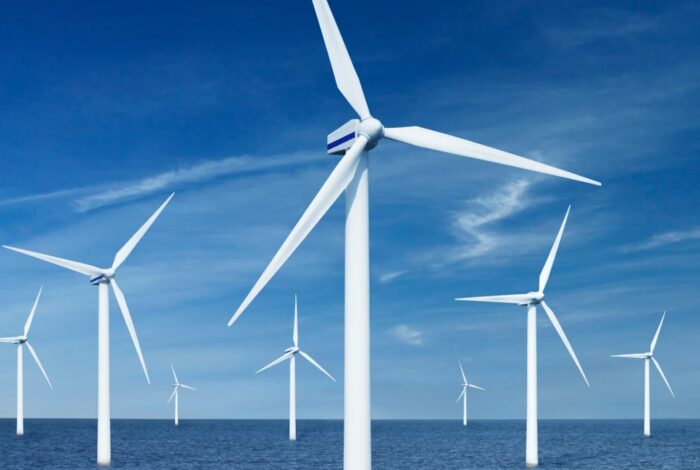 What is the potential for climate change policy to affect climate change? I often discuss, here and on the SGU, the science of climate change, and specifically focus on what we can do about it, mostly by reducing our CO2 emissions. Often I get push back explicitly promoting the position that there is nothing we can really do about, so we should just let technology and economics play themselves out. This is the position of the fossil fuel industry, whose opinion on climate change may vary but always concludes with – do nothing. This may take various forms – climate change isn’t real, climate change won’t be bad, it may be happening but it’s not because of human activity, there’s nothing we can do about it anyway, or whatabout China. The one thing all these positions have in common is the ultimate result – do nothing. It’s almost as if some people are starting with that conclusion and then working backward to whatever justification they can defend at the moment.
What is the potential for climate change policy to affect climate change? I often discuss, here and on the SGU, the science of climate change, and specifically focus on what we can do about it, mostly by reducing our CO2 emissions. Often I get push back explicitly promoting the position that there is nothing we can really do about, so we should just let technology and economics play themselves out. This is the position of the fossil fuel industry, whose opinion on climate change may vary but always concludes with – do nothing. This may take various forms – climate change isn’t real, climate change won’t be bad, it may be happening but it’s not because of human activity, there’s nothing we can do about it anyway, or whatabout China. The one thing all these positions have in common is the ultimate result – do nothing. It’s almost as if some people are starting with that conclusion and then working backward to whatever justification they can defend at the moment.
But often I get questions that reflect genuine confusion about climate change policy – is there anything “we” can really do? The “we” may be us as individuals, or our country, or the world. I do believe the most important thing we can do as individuals, those of us living in democracies, is to be knowledgeable about climate policy and vote for politicians who support good climate policy. If we don’t make it a priority why should we expect our elected leaders to? In a recent Pew survey, 71% of Americans said they thought that policy to address climate change is either a top or important priority. In the same survey 74% of Amercians support US involvement in international efforts to address climate change.
But what is good climate policy? For most people who raise the issue for me the first thing that comes up is subsidies for electric vehicles, almost as if this one policy is the poster-child for climate change action. But this is arguably the least effective and least important climate policy. Subsidies may have been useful a decade ago to kickstart a new industry, but I think we are past that point. Here are some of the policies that can have a significant, even dramatic effect, on future CO2 release. Continue Reading »
Aug
21
2023
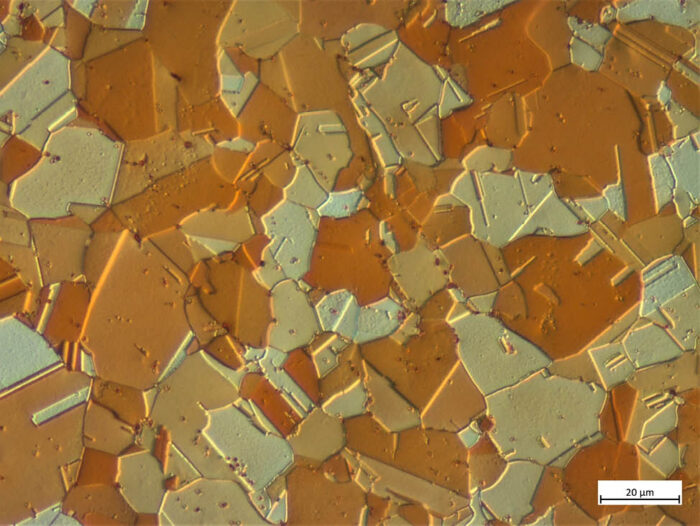 Science fiction writers, who have to think deeply about the possible nature of future technology, often invent new sci-fi materials in order to make their future technology seem plausible. They seem to understand the critical role that material science plays in advancing technology. This is why sci-fi is full of fictional materials such as unobtainium, vibranium, adamantium, and carbonite (to name just some of the most famous ones). New materials change the limits of what’s possible. There is only so much that technology can do within the limits of existing materials.
Science fiction writers, who have to think deeply about the possible nature of future technology, often invent new sci-fi materials in order to make their future technology seem plausible. They seem to understand the critical role that material science plays in advancing technology. This is why sci-fi is full of fictional materials such as unobtainium, vibranium, adamantium, and carbonite (to name just some of the most famous ones). New materials change the limits of what’s possible. There is only so much that technology can do within the limits of existing materials.
In fact the early stages of human technology are defined by the materials they used, from the stone age to the iron age. Today we live in the steel age, more than 3,000 years after steel production came into existence. There are many advanced materials with different applications, but in many ways steel still defines the limits of our technology. This is why research looking for ways to improve the characteristics of modern steel is still going on. A recent study might be pointing the way to one method of pushing the limits of steel.
Steel is simply an alloy of iron combined with a small percentage of carbon. Carbon atoms bind with the iron atoms to make crystals of steel that are harder and stronger than iron by itself. The properties of steel can be adjusted by the percentage of carbon in the alloy. The properties of the resulting steel can also be altered by alloying other metals with the steel as well- molybdenum, manganese, nickel, chromium, vanadium, silicon, and boron, for example. These can make the steel stronger, tougher, more ductile, heat resistant, or rust resistant.
Continue Reading »
Aug
15
2023
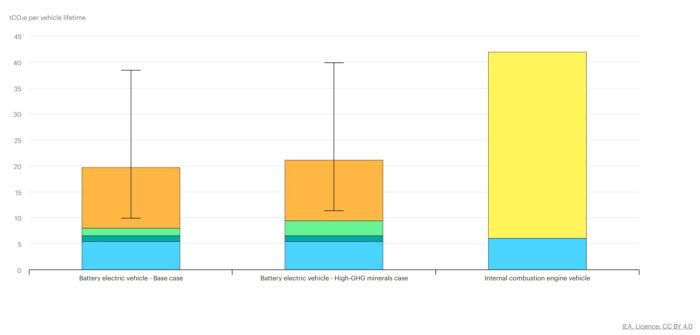 This article is part of my informal series on EVs, sorting through the claims, reality, and propaganda. There are many complicated factors to sort through, but overall, in my opinion, most concerns about EVs are outdated or overblown. There are definitely locations and use scenarios that still favor ICE (internal combustion engine) vehicles (or at least hybrids) for now, but the battery and EV technology is still on the steep part of the curve, and infrastructure is being built. The percentage of the population for whom EVs make sense will slowly expand, until it’s the best choice for 95% or so. Over this same time period (about 20 years) we should also be decarbonizing our energy production. We can also be reducing dependence on individual cars by building mass transit, making more walkable living spaces, and eventually developing cars as a service (with self-driving cars). For trains and long haul trucking, hydrogen may eventually be the best bet. For short flight planes, electric vehicles are increasingly plausible, while long distance jet travel will need biofuels to keep their carbon footprint down.
This article is part of my informal series on EVs, sorting through the claims, reality, and propaganda. There are many complicated factors to sort through, but overall, in my opinion, most concerns about EVs are outdated or overblown. There are definitely locations and use scenarios that still favor ICE (internal combustion engine) vehicles (or at least hybrids) for now, but the battery and EV technology is still on the steep part of the curve, and infrastructure is being built. The percentage of the population for whom EVs make sense will slowly expand, until it’s the best choice for 95% or so. Over this same time period (about 20 years) we should also be decarbonizing our energy production. We can also be reducing dependence on individual cars by building mass transit, making more walkable living spaces, and eventually developing cars as a service (with self-driving cars). For trains and long haul trucking, hydrogen may eventually be the best bet. For short flight planes, electric vehicles are increasingly plausible, while long distance jet travel will need biofuels to keep their carbon footprint down.
After my recent articles on EVs, and companion discussions on the SGU, one of the questions that has been raised that I want to dive deeper into is this – are EVs still better than ICE vehicles even when we consider everything that goes into vehicle production? Spoiler – I think the consensus is that yes, EVs are still better. They have a lower total carbon footprint over the lifetime of use than ICE vehicles. But this is not a universal opinion. For example, I was pointed to this podcast in which the business man and physicist host claims: “Pushing an all-EV world is likely to increase CO2 emissions.”
Continue Reading »
Aug
04
2023
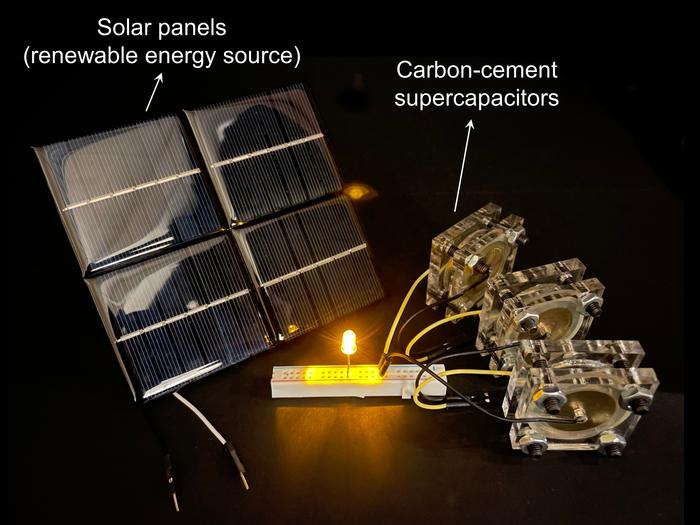 Imagine if every house, every building, came with 1-2 days (or possibly more) of energy storage. What if every wind turbine could store a day’s worth of the energy it produces on average? How beneficial would it be if the most common building material the world could be used to store energy? This prospect is not far fetched, and a new study by MIT scientists has already done a proof-of-concept.
Imagine if every house, every building, came with 1-2 days (or possibly more) of energy storage. What if every wind turbine could store a day’s worth of the energy it produces on average? How beneficial would it be if the most common building material the world could be used to store energy? This prospect is not far fetched, and a new study by MIT scientists has already done a proof-of-concept.
The material is cement, and what these researchers have demonstrated is that they can turn cement into a supercapacitor with another common material – carbon black. A capacitor is a device in which two conductive plates are separated by an insulating layer. This allows negative charge to build up on the positive plate and positive charge to build up on the negative plate, with the separated charges storing electrical energy. The Capacitors have several advantages for energy storage devices – they can store and discharge energy very quickly, they are relatively simple to construct, and they have almost endless charge and discharge cycles. But they also have one major disadvantage, they store very little energy per volume or mass.
As I discussed previously, current lithium ion batteries have energy densities up to 265 Wh/kg. The new Amprius lithium ion batteries with silicon anodes have an energy density of 500 Wh/kg. A typical supercapacitor (just a high energy density capacitor) has an energy density of 16 Wh/kg. My previous article was about a carbon nanofiber supercapacitor with energy density up to 73 Wh/kg – very high for a supercapacitor, but still tiny compared to cutting edge lithium ion batteries.
For an application like a car, a supercapacitor simply holds too little energy. But they could supplement the battery, and would increase the efficiency of regenerative braking. Future EVs might combine a battery and a supercapacitor to get the best of both worlds. Also, if the body of the car itself could be constructed out of a supercapacitor, that could add range and efficiency without adding any weight to the car.
Continue Reading »
Jul
31
2023
 If you are at all interested in science and technology news, you have probably heard that a team from South Korea claims to have developed a material that is a superconductor at room temperature and ambient pressure. Interestingly, if you are someone who does not follow such news, you probably haven’t read this. As is often the case, I am as interested in how certain science news gets received and reported as the news itself, and this is an interesting case.
If you are at all interested in science and technology news, you have probably heard that a team from South Korea claims to have developed a material that is a superconductor at room temperature and ambient pressure. Interestingly, if you are someone who does not follow such news, you probably haven’t read this. As is often the case, I am as interested in how certain science news gets received and reported as the news itself, and this is an interesting case.
First, the claim being made here is beyond massive. If true (and that’s still a big if) this is the biggest science news so far this century. I would rank it above even CRISPR. This is a technological “holy grail” if ever there were one. A superconductor is a material that conducts electricity without resistance, so there is no energy loss or waste heat produced. It doesn’t take much of an imagination to figure out how useful this would be. We dedicated an entire chapter to this idea in our recent book on future technology. We have a massively and increasingly electrified civilization, and a practical superconducting material would benefit almost every aspect of it. It also makes some extreme technologies more plausible, such as fusion power. We (the world) are about to (hopefully) invest billions if not trillions into upgrading our electrical power grids, and this is the material we would use if these claims are true.
We already have superconductors. You might remember back in the 1980s when scientists discovered the first “high temperature” superconducting class of material. This was only relatively high temperature – raising the highest critical temperature (the temperature below which a substance is superconducting) above 77 K, the boiling point of liquid nitrogen. While still extremely cold, cooling with liquid nitrogen is much cheaper and more practical than liquid hydrogen or helium. Since then other classes of material have been found with critical temperatures as 250 K, but these require extremely high pressures. They basically are not practical for anything, and are only useful for superconductivity research.
Here is the new paper – it’s a preprint, which means it has not been peer-reviewed. I think that’s one of the reasons the news isn’t headlined everywhere. The researchers claim to have produced essentially an alloy of lead, apatite, and copper that is a superconductor at room temperature, actually up to 127°C (261°F), at ambient pressure. Further, this is not some brittle ceramic, it’s a ductile metal. They report: Continue Reading »
Jul
27
2023
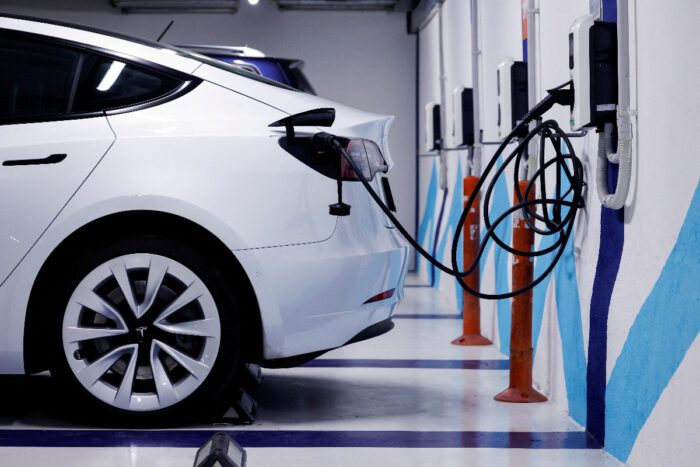
I recently wrote about electric vehicles, which sparked a lively discussion in the comments. There was enough discussion that I wanted to pull my responses together into a new post. Before I get to the details, some general observations. The conversation, in my opinion, nicely demonstrates a couple of general critical thinking principles. The first is that basically well-meaning people (meaning they are not a paid shill) can look at essentially the same collection of facts and come to a different opinion. This relates partly to another post I wrote recently, about how we can subjectively define “true” in order to support pre-existing narratives.
The other principle on clear display in the comments is our old friend confirmation bias (this cuts in all directions, although not necessarily symmetrically). We tend to seek out, accept, and remember bits of information that seem to support what we already believe or want to believe, while finding reasons to dismiss or ignore information that contradicts our narrative. The result is a powerful illusion of knowledge, that what we feel in our guts (or aligns with our ideology) is objectively and obviously true. Therefore, those who disagree with us must be suffering some catastrophic personal failing.
There are also external factors at play, because we are not living in a neutral or disinterested information ecosystem. Not only are we biased in how we gather facts, information is being curated for us with the specific purpose of influencing what we believe to be true. This is also a self-reinforcing phenomenon, because acceptance of curated information leads us to increasingly curated and extreme sources of information, sometimes leading to the infamous “information bubble”.
Continue Reading »
Jul
24
2023
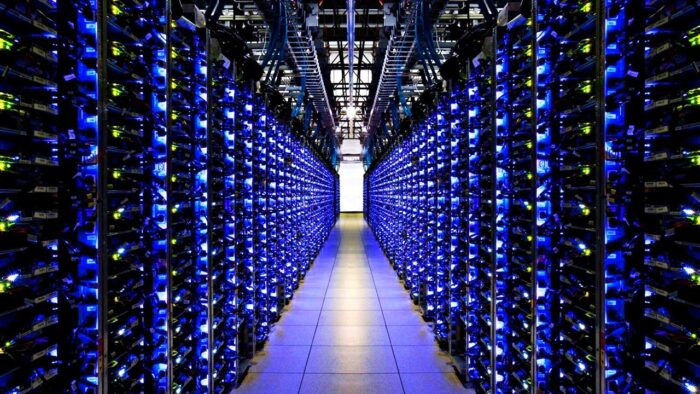 An analysis in 2021 found that 10% of the world’s electricity production is used by computers, including personal use, data centers, the internet and communication centers. The same analysis projected that this was likely to increase to 20% by 2025. This may have been an underestimate because it did not factor in the recent explosion of AI and large language models. Just training a large language model can cost $4-5 million and expend a lot of energy.
An analysis in 2021 found that 10% of the world’s electricity production is used by computers, including personal use, data centers, the internet and communication centers. The same analysis projected that this was likely to increase to 20% by 2025. This may have been an underestimate because it did not factor in the recent explosion of AI and large language models. Just training a large language model can cost $4-5 million and expend a lot of energy.
I am not trying to doomsay these statistics. Civilization gets a lot of useful work out of all this computing power, and it likely displaces much less efficient ways of doing things. One Zoom meeting vs an in-person meeting can be a huge energy savings. In fact, as long as we use all that computing power reasonably, it’s all good. We can talk about the utility of specific applications, like mining Bitcoins, but overall the dramatic advance of computing is a good thing. But it does shift our energy use, and it does represent the electrification of some technology. We therefore have to factor it in when extrapolating our future electricity uses (just like we need to consider the effect of shifting our car fleet from burning gasoline to using electricity).
The situation also presents an opportunity. As more and more of our energy use is shifted to computers as our world becomes more digital, that means we can have increasing improvement in our overall energy efficiency just by targeting one technology. For example, if computers used 20% of the world’s electricity, a 50% improvement in computer efficiency would result in a 10% drop in our energy demand (once fully implemented). Obviously such improvements would be implemented over years, but it points out how high the stakes are becoming for computer power efficiency. This means the industry needs to focus not just on doing things bigger, better, faster, but also more efficiently. We also need to think twice before adopting wasteful practices.
Continue Reading »
Jul
21
2023
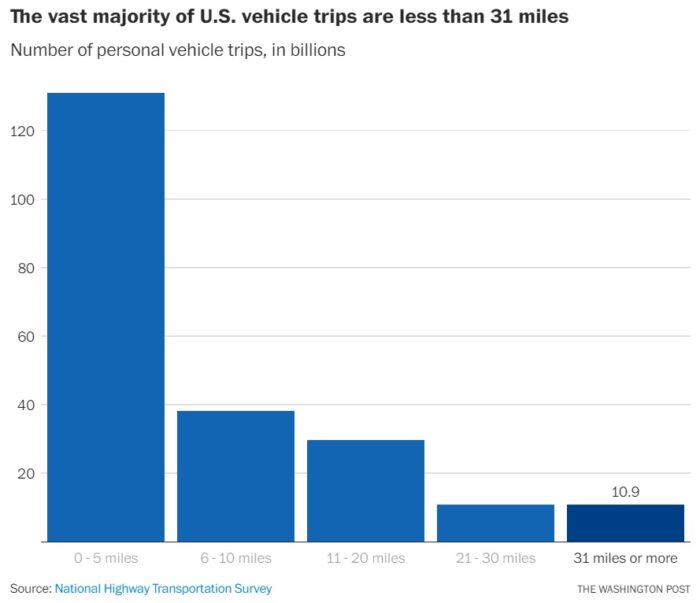 One of the key components of the plan to get our civilization to net zero by 2050 is to transform the motor vehicle fleet into all electric vehicles (EVs). This is a worthy goal, as it would eliminate burning gasoline for transportation. In fact it’s necessary if we want to get near net zero. Governments and the auto industry are responding with incentives for EVs, some regulations forcing the phasing out of internal combustion engine (ICE) vehicles, and investment of billions even trillions of dollars to change over production lines, secure raw material sources, and build charging stations.
One of the key components of the plan to get our civilization to net zero by 2050 is to transform the motor vehicle fleet into all electric vehicles (EVs). This is a worthy goal, as it would eliminate burning gasoline for transportation. In fact it’s necessary if we want to get near net zero. Governments and the auto industry are responding with incentives for EVs, some regulations forcing the phasing out of internal combustion engine (ICE) vehicles, and investment of billions even trillions of dollars to change over production lines, secure raw material sources, and build charging stations.
But EVs have their critics. And some experts point out (a valid point I completely agree with) that we have to consider the optimal pathway to net zero, not just the destination. By 2050 EVs will be an even more mature technology than they are now, and batteries will have at least 4-5 times the energy density. We may also have battery designs that use more abundant and less problematic raw material. Also by then there should be a robust infrastructure of charging stations, and a green energy grid to support them. So it’ easy to imagine the world of 2050 with an all EV transportation infrastructure that is as close to net zero as possible.
I also have to say, I own a Tesla and it’s the best car I ever owned. The driving experience is great – once you get used to the regenerative breaking, you have more and easier control. Acceleration is instantaneous. Charging at home every night is easy, and you never have to visit a gas station. There is literally almost no maintenance – no oil changes, no tune-ups, no engine parts that wear out. The break pads last much longer because you very rarely use the breaks. At least along the East coast, long trips are no problem.
But what is the optimal path to get to full EV? And this is not just about getting there quickly. EVs may not be the best option for everyone right now. The optimal path may go through bridging technologies, most notably plug-in hybrids. What are the downsides to EVs?
Continue Reading »
 I know we are supposed to be worried about the world supply of fresh water. I have been hearing that at least for the last 40 years, and the statistics are alarming. According to the Global Commission on the Economics of Water:
I know we are supposed to be worried about the world supply of fresh water. I have been hearing that at least for the last 40 years, and the statistics are alarming. According to the Global Commission on the Economics of Water:
 We are still sorting out the strengths and weaknesses of the new crop of artificial intelligence (AI) applications, the poster-child of which is ChatGPT. This is a so-called large language model application using a “generative pre-trained transformer”. Essentially these types of AI are trained on very large sets of data and are able to generate human-sounding text by predicting the most likely next word segment in a sequence. The results are surprisingly good.
We are still sorting out the strengths and weaknesses of the new crop of artificial intelligence (AI) applications, the poster-child of which is ChatGPT. This is a so-called large language model application using a “generative pre-trained transformer”. Essentially these types of AI are trained on very large sets of data and are able to generate human-sounding text by predicting the most likely next word segment in a sequence. The results are surprisingly good. What is the potential for climate change policy to affect climate change? I often discuss, here and on the SGU, the science of climate change, and specifically focus on what we can do about it, mostly by reducing our CO2 emissions. Often I get push back explicitly promoting the position that there is nothing we can really do about, so we should just let technology and economics play themselves out. This is the position of the fossil fuel industry, whose opinion on climate change may vary but always concludes with – do nothing. This may take various forms – climate change isn’t real, climate change won’t be bad, it may be happening but it’s not because of human activity, there’s nothing we can do about it anyway, or whatabout China. The one thing all these positions have in common is the ultimate result – do nothing. It’s almost as if some people are starting with that conclusion and then working backward to whatever justification they can defend at the moment.
What is the potential for climate change policy to affect climate change? I often discuss, here and on the SGU, the science of climate change, and specifically focus on what we can do about it, mostly by reducing our CO2 emissions. Often I get push back explicitly promoting the position that there is nothing we can really do about, so we should just let technology and economics play themselves out. This is the position of the fossil fuel industry, whose opinion on climate change may vary but always concludes with – do nothing. This may take various forms – climate change isn’t real, climate change won’t be bad, it may be happening but it’s not because of human activity, there’s nothing we can do about it anyway, or whatabout China. The one thing all these positions have in common is the ultimate result – do nothing. It’s almost as if some people are starting with that conclusion and then working backward to whatever justification they can defend at the moment. Science fiction writers, who have to think deeply about the possible nature of future technology, often invent new sci-fi materials in order to make their future technology seem plausible. They seem to understand the critical role that material science plays in advancing technology. This is why sci-fi is full of fictional materials such as unobtainium, vibranium, adamantium, and carbonite (to name just some of the most famous ones). New materials change the limits of what’s possible. There is only so much that technology can do within the limits of existing materials.
Science fiction writers, who have to think deeply about the possible nature of future technology, often invent new sci-fi materials in order to make their future technology seem plausible. They seem to understand the critical role that material science plays in advancing technology. This is why sci-fi is full of fictional materials such as unobtainium, vibranium, adamantium, and carbonite (to name just some of the most famous ones). New materials change the limits of what’s possible. There is only so much that technology can do within the limits of existing materials. This article is part of my informal series on EVs,
This article is part of my informal series on EVs,  Imagine if every house, every building, came with 1-2 days (or possibly more) of energy storage. What if every wind turbine could store a day’s worth of the energy it produces on average? How beneficial would it be if the most common building material the world could be used to store energy? This prospect is not far fetched, and
Imagine if every house, every building, came with 1-2 days (or possibly more) of energy storage. What if every wind turbine could store a day’s worth of the energy it produces on average? How beneficial would it be if the most common building material the world could be used to store energy? This prospect is not far fetched, and  If you are at all interested in science and technology news, you have probably heard that a team from South Korea claims to have developed a material that is a superconductor at room temperature and ambient pressure. Interestingly, if you are someone who does not follow such news, you probably haven’t read this. As is often the case, I am as interested in how certain science news gets received and reported as the news itself, and this is an interesting case.
If you are at all interested in science and technology news, you have probably heard that a team from South Korea claims to have developed a material that is a superconductor at room temperature and ambient pressure. Interestingly, if you are someone who does not follow such news, you probably haven’t read this. As is often the case, I am as interested in how certain science news gets received and reported as the news itself, and this is an interesting case.
 An analysis in 2021 found that
An analysis in 2021 found that  One of the key components of the plan to get our civilization to net zero by 2050 is to transform the motor vehicle fleet into all electric vehicles (EVs). This is a worthy goal, as it would eliminate burning gasoline for transportation. In fact it’s necessary if we want to get near net zero. Governments and the auto industry are responding with incentives for EVs, some regulations forcing the phasing out of internal combustion engine (ICE) vehicles, and investment of billions even trillions of dollars to change over production lines, secure raw material sources, and build charging stations.
One of the key components of the plan to get our civilization to net zero by 2050 is to transform the motor vehicle fleet into all electric vehicles (EVs). This is a worthy goal, as it would eliminate burning gasoline for transportation. In fact it’s necessary if we want to get near net zero. Governments and the auto industry are responding with incentives for EVs, some regulations forcing the phasing out of internal combustion engine (ICE) vehicles, and investment of billions even trillions of dollars to change over production lines, secure raw material sources, and build charging stations.




